From 5D to R5 II: Canon’s EOS 5 Series Turns 20
![]()
The Canon EOS 5 Series celebrates its 20th birthday this year. The series, which launched with the original EOS 5D DSLR in 2005, continues to this day, with the most recent member being the excellent EOS R5 Mark II full-frame mirrorless camera. The 20th anniversary provides a great time to reflect and take a fresh look at all the Canon EOS 5 Series cameras released to date.
2005: Canon EOS 5D — Canon’s First Affordable Full-Frame DSLR
When Canon released the first EOS 5D camera in September 2005, the camera’s 12.8-megapixel full-frame CMOS sensor was a revolutionary breakthrough. Its primary DSLR competitor, Nikon, was still about a year and a half from launching its first full-frame DSLR, the professional flagship D3, and nearly three years away from its first affordable full-frame camera, the Nikon D700. Canon got a massive head start in the space, and the EOS 5D played a significant role in ushering in full-frame photography for the masses.
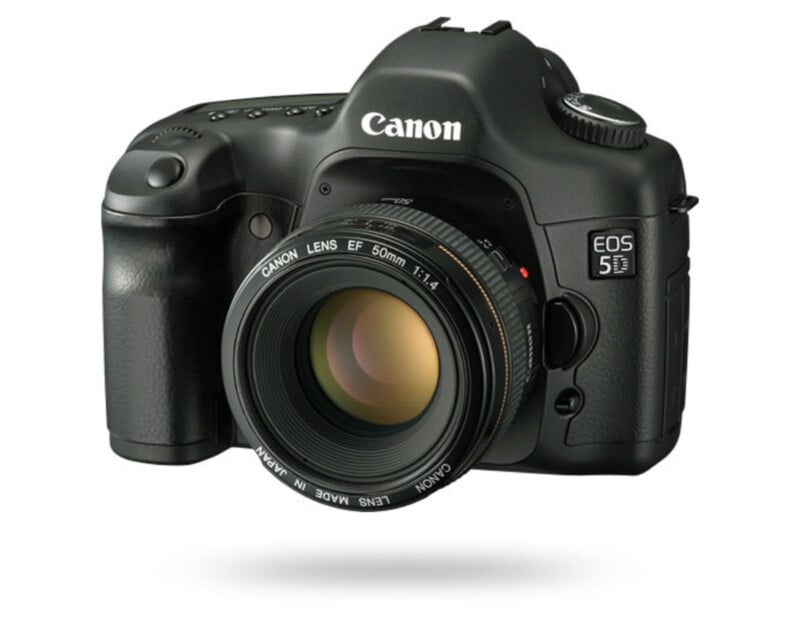
PetaPixel was still about four years away from launching, so as expected, we don’t have any hands-on coverage for the original Canon EOS 5D. However, to borrow from Imaging Resource, Shawn Barnett remarked that the 5D’s full-frame sensor plopped inside a Canon EOS 20D body represented “what could be called the holy grail of digital SLRs.”
Although the image sensor proved imperfect and Canon’s EF lens lineup had not quite caught up to full-frame sensors yet in 2005, the Canon EOS 5D was a smash hit and an instant classic. It also lived up to its promise and demonstrated that full-frame photography was here to stay. The Canon 5D is arguably the most historically significant digital camera ever released, even if its features and performance are archaic by modern standards.
2008: Canon EOS 5D Mark II — A Massive Megapixel Leap
The Canon EOS 5D Mark II not only leaped to a high-resolution 21.1-megapixel sensor, which would still not be out of place even today, but it was a groundbreaking camera thanks to its ability to record Full HD video with manual controls and undoubtably played a significant role in making video capture more accessible. The original 5D was the first full-frame camera that felt within reach for the vast majority of photographers; its successor was the first full-frame camera to put FHD video recording into the hands of photographers.

The 5D Mark II was more than a resolution bump and hybrid camera, though. The camera smoothed out many of the original 5D’s bumps, which were increasingly challenging to overlook as other cameras entered the “affordable” full-frame space. Not only did the 5D Mark II’s new features point toward photography’s hybrid future, its relatively strong performance compared to its Nikon and Sony DSLR competitors cemented the 5D Mark II’s lofty position within the pantheon of great Canon digital cameras.
2012: Canon EOS 5D Mark III — A Sleeper Hit
When the 5D Mark III released, which a fresh-faced PetaPixel could actually cover at launch, photographers noted its lack of “oomph.” The original 5D was obviously noteworthy by virtue of its groundbreaking nature and the 5D Mark II’s 21-megapixel sensor and video recording capabilities were a huge deal in 2008. In contrast, the 5D Mark III didn’t really have that one huge new feature.
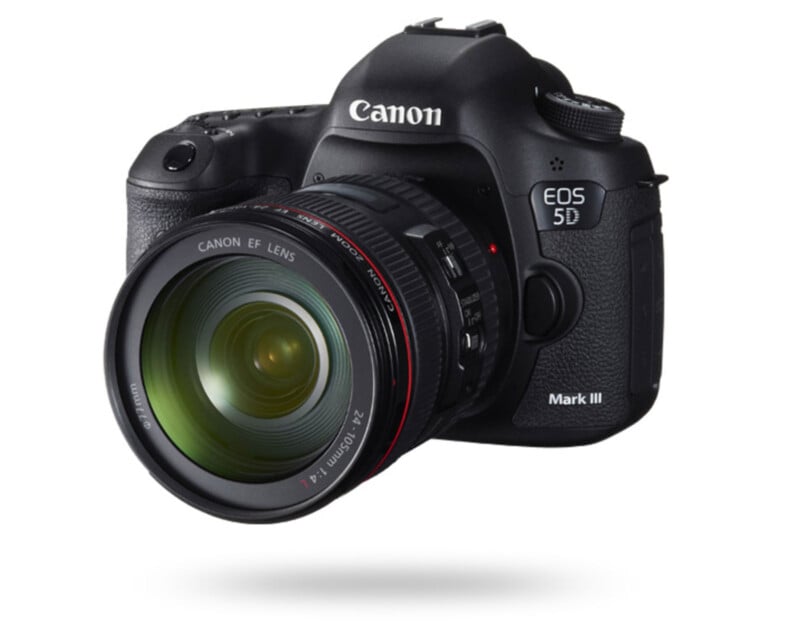
However, the devil is in the details, and Canon’s engineers knew that as much as anyone else in the industry in 2012. Nearly every single aspect of the 5D Mark III, while not necessarily hugely better than before, had been improved. No stone was left unturned. The camera sported a completely redesigned camera body, borrowed from the excellent EOS 7D APS-C DSLR. The 5D Mark III’s new autofocus system and processor were derived from the camera’s flagship 1DX DSLR, a first for the 5 Series and a sign of things to come in the mirrorless era, more than a decade later. The 5D Mark III’s revised menu system also came from the 1DX, as did its then-novel silent shooting mode.
All these refinements made the Canon EOS 5D III equally adept in either an enthusiast’s or a professional’s bag. The 5D Mark III was a remarkably powerful full-frame camera that solidified the Canon EOS 5 Series’ place as a legitimate professional camera, a billing that the latest 5 Series model, the R5 Mark II, continues to uphold today.
2015: Canon EOS 5DS and EOS 5DS R — The Oddballs of the Bunch
In early 2015, about half a year before Sony would launch the incredible high-resolution Sony a7R II mirrorless camera and while Nikon was riding high with the D800 and D810, Canon threw down the megapixel gauntlet. Canon launched a pair of 50.6-megapixel DSLRs, the Canon EOS 5DS and the EOS 5DS R. These two cameras, differentiated by whether or not they had an optical low-pass filter (think Nikon D800 versus Nikon D800E), remain to this day the highest-resolution full-frame cameras Canon has ever released.
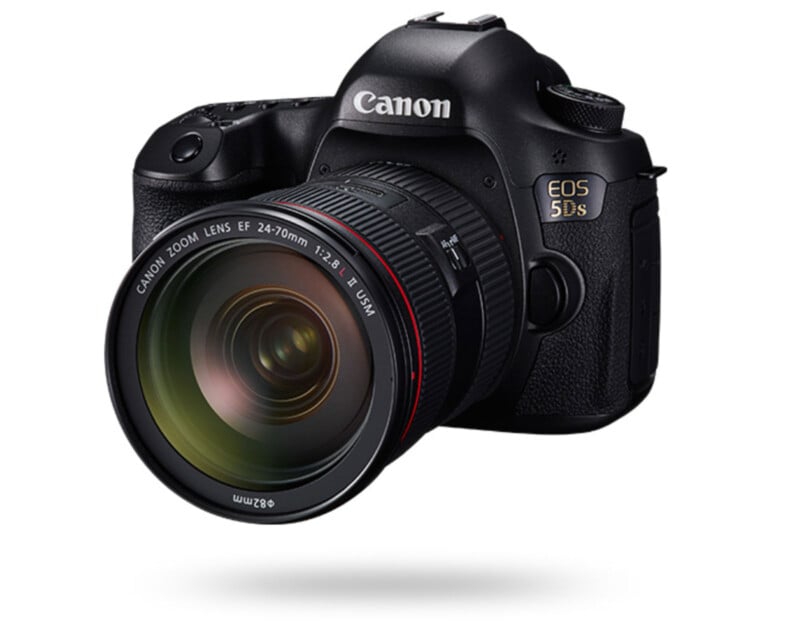
However, while winning the megapixel race in 2015 was an understandable goal, the temporary victory came at a cost. The 50.6-megapixel sensor’s dynamic range was inferior to that of the 36-megapixel Sony and Nikon cameras, as was its noise performance. Autofocus proved sluggish, and overall usability suffered from Canon’s drive for more pixels. The cameras were highly successful in narrow ways but struggled when forced to deviate from their lane.
Nonetheless, while the 5DS and 5DS R may have lost some of what makes the EOS 5 Series special, including its overall versatility, they are worth celebrating for their boldness. The camera landscape is too often full of boring choices and aversion to risk, but the EOS 5DS and 5DS R cameras were anything but boring.
2016: Canon EOS 5D Mark IV — Canon’s Last EOS 5 Series DSLR
After the detour that was the 5DS series, the Canon 5D Mark IV arrived the following year, finally delivering the 5D Mark III successor that Canon owners had been waiting for.
However, what the EOS 5 Series is, or at least what people wanted it to be, changed significantly over the years. The 5D Mark IV arrived at a time of great tension. In 2016, Canon had already been dipping its toes in the mirrorless space with the EOS M series, and Sony was just about a month away from releasing its final DSLR ever, the a99 II. In hindsight, and arguably even at the time, the writing was on the wall: DSLR dominance was coming to an end. Even as DSLRs were still selling in relatively high numbers, their technological limitations were becoming increasingly difficult to ignore. Nonetheless, and to its fault, Canon itself would stay committed to full-frame DSLR cameras for a couple more years.
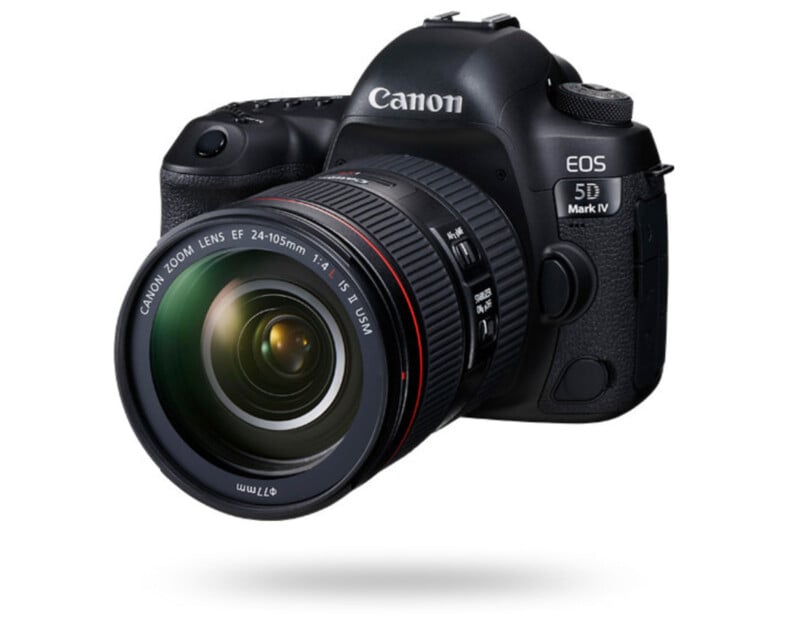
The 5D Mark IV was a better camera than the 5D Mark III in nearly every way, but it was no longer near the top of its class. Arguably, it had already begun falling behind as soon as it was released. The four years Canon took to make the 5D Mark IV may have been well spent — the 5D IV really is a great DSLR — but its advancements did not keep pace with expectations over that period. It was an evolution at a time when people yearned for revolution.
2020: Canon EOS R5 — Welcome to the Mirrorless Party, Pal
Canon stuck to the four-year cycle for its next EOS 5 Series camera and its first mirrorless one, the Canon EOS R5 launched alongside the EOS R6 in 2020. The EOS R5 encapsulated some of the spirit that made the EOS 5D Mark II such a special camera 12 years prior, but also suffered from some of the same shortcomings.
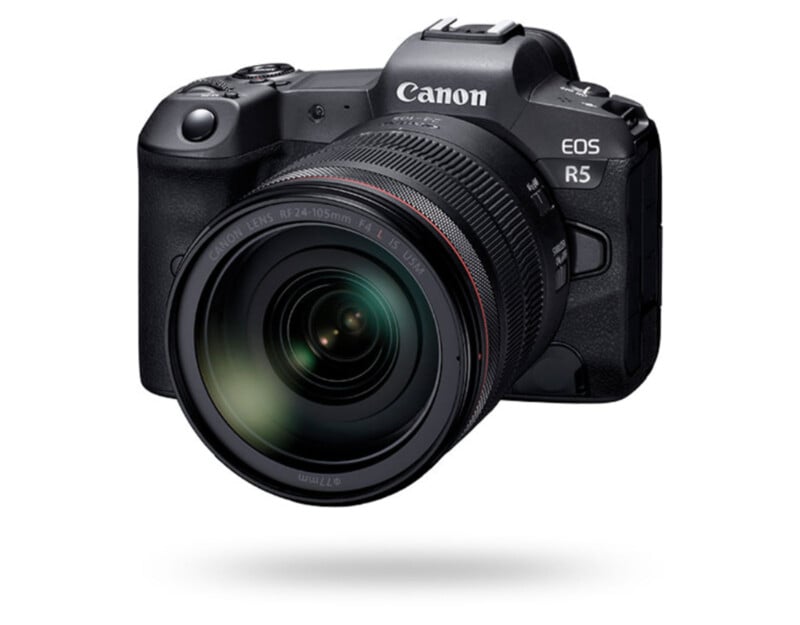
With an all-new 45-megapixel sensor, the closest Canon has gotten to the 5DS and 5DS R’s 50-megapixel watermark, and 8K recording, the Canon EOS R5 promised to be a super-versatile camera for a wide range of photographers and videographers. The EOS R5 C, released in 2022, upped the video features while mostly solving the R5’s infamous overheating problem.
Although not as relatively awesome in 2020 as the 5D II was in 2008, the Canon EOS R5 demonstrated that Canon could innovate and compete against the best in the mirrorless space. While the R5 still came up a little bit short against some of its peers and Canon continued to play catch-up in the mirrorless space in 2020, the R5 showed that Canon could deliver a high-resolution camera with excellent autofocus, solid performance, and impressive video. The R5 echoed the spirit of the early 5D DSLRs, even if it failed to have quite the same impact.
2024: Canon EOS R5 Mark II — One of the Best Cameras Canon Has Ever Released
Last year, Canon launched the EOS R5 Mark II, its most recent EOS 5 Series model and by far the closest Canon has come to matching the “wow” factor of the legendary 5D Mark III in the mirrorless age. Much like the 5D III addressed nearly all the 5D II’s shortcomings in 2012, the R5 II did the same thing for 2020’s R5.
With its faster and better stacked 45-megapixel image sensor and autofocus borrowed from Canon’s flagship EOS R1 (remember, the 5D Mark III cribbed its autofocus system from the 1DX), the R5 II is Canon’s best overall EOS R series camera and the most versatile camera it has released in a very long time.
Much like the 5D III earned its place in a professional’s kit, so too does the R5 II. In fact, despite being announced alongside the EOS R1, the R5 II proved to be by far the more exciting release despite the R1’s off-the-charts hype factor. It’s not often a “mid-range” camera overshadows a flagship model, but that speaks to the legacy and broad appeal of the EOS 5 Series.
But the R5 II is more than its impressive specs. It is also genuinely considerable fun and enjoyable to use, which is an essential ingredient for a camera to ultimately go down as a “classic.” While it is far too early to know if the EOS R5 II will become one of the Canon cameras that photographers look upon fondly a decade after its release, it has all the essential ingredients.

“The R5 Mark II is easy to love,” Chris Niccolls wrote in PetaPixel‘s R5 Mark II Review. Arguably, the R5 II is the first EOS R Series camera to achieve this ever-so-important feat.
Where Does the EOS 5 Series Go Next?
20 years and eight (nine if you count the EOS R5 C) cameras later, the Canon EOS 5 Series has left an indelible mark on the photography industry.
The original Canon EOS 5D in 2005 introduced full-frame photography to an all-new segment of photographers and broke down barriers; the 5D Mark II had nearly the same impact when it came to bringing video to the photography space.
The Canon EOS 5D Mark III, perhaps the most beloved 5D camera of all, demonstrated that the EOS 5 Series was not just for enthusiasts but could be a relatively compact professional-grade camera. This versatility would inform all future EOS 5 Series models, including the most recent one, the EOS R5 II.
![]()
Even though the 5D IV arrived too late, and the EOS R5 may have left the oven before it was fully cooked, last year’s R5 II shows that Canon has not lost sight of what makes the EOS 5 Series special. Quite the contrary, in fact.
Although the R5 II will never have quite the same success as the 5D III did when it launched at the height of the camera industry, the Canon EOS R5 II demonstrates that even though the photography landscape has changed, the core promise of the EOS 5 Series hasn’t. That’s fantastic news for photographers, amateur and professional alike.
Image credits: Canon Camera Museum. Header image created using assets licensed via Depositphotos.